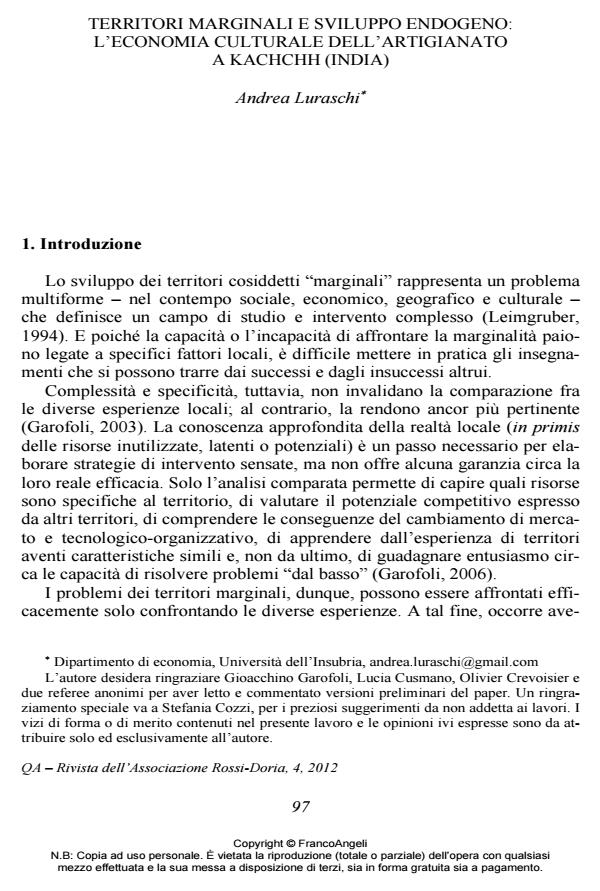Marginal Areas and Endogenous Development: The Cultural Economy of Handicraft in Kachchh (India)
Journal title QA Rivista dell’Associazione Rossi-Doria
Author/s Andrea Luraschi
Publishing Year 2013 Issue 2012/4
Language Italian Pages 30 P. 97-126 File size 839 KB
DOI 10.3280/QU2012-004004
DOI is like a bar code for intellectual property: to have more infomation
click here
Below, you can see the article first page
If you want to buy this article in PDF format, you can do it, following the instructions to buy download credits

FrancoAngeli is member of Publishers International Linking Association, Inc (PILA), a not-for-profit association which run the CrossRef service enabling links to and from online scholarly content.
This study aims, through analysis of a representative case, to help towards an understanding of the conditions and processes that allow a marginal area to pursue a path of sustainable development. Two main conclusions emerge. Firstly, the actual possibility for marginal areas to exit stagnation seems related to the mobilization of local resources and capabilities, i.e. the triggering of endogenous development processes. Secondly, cultural resources hold a special importance for marginal areas, as they are always present though often "hidden" or latent. Endogenous development means precisely mobilizing and enhancing the resources "trapped" in an area.
EconLit Classification: O180, Z110
Keywords: Marginal areas, Endogenous development, Handicraft, Cultural economy
Andrea Luraschi, Territori marginali e sviluppo endogeno: l’economia culturale dell’artigianato a Kachchh (India) in "QA Rivista dell’Associazione Rossi-Doria" 4/2012, pp 97-126, DOI: 10.3280/QU2012-004004